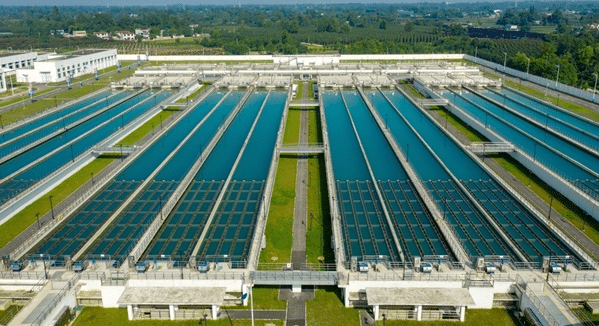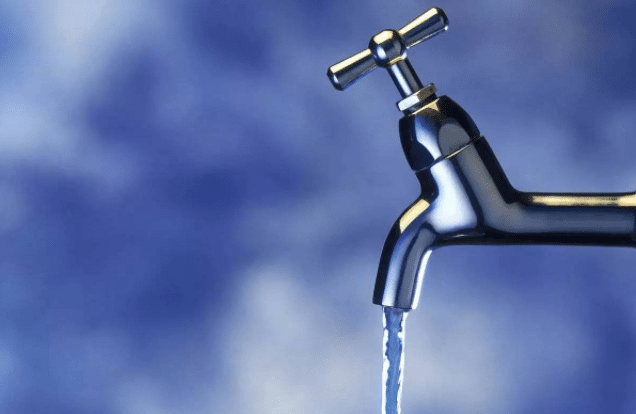Municipal water is usually supplied to factories and communities through underground pipes. Most of the water is used for cleaning, cooking and bathing. Sometimes it is also used for drinking and the quality of the municipal water supply needs to be considered. We can say that municipal water is closely related to our lives.
What is municipal water supply?
Municipal water supply is piped through underground pipes to various factories, businesses and homes. This water is first fully treated and processed (including disinfection and sterilization) at a municipal water treatment plant before being delivered to its destination, where most impurities have been removed and safe water is guaranteed.
The main sources of municipal water include rivers, reservoirs and lakes. Municipal water supply requires a high guarantee rate and has requirements in terms of water quantity, quality and pressure.

Water quantity
- The amount of water available for residential use is determined by climatic conditions, the extent of indoor water supply and drainage equipment and sanitation facilities, and the living habits of residents. Municipal public water consumption varies greatly according to the purpose of the facilities (such as hospitals, hotels, schools, etc.). The amount of water used for fire-fighting depends on the amount of water needed to fight a fire and the number of fires that occur at the same time. The water quota for urban living generally increases with the improvement of living standards and living conditions.
- Industrial water use varies with the industry, process, equipment type and degree of mechanization and automation. The amount of water used per unit of the same product generally decreases as the level of industrial technology increases.
Water quality
Domestic drinking water has strict requirements for water quality, the following water quality parameters, namely turbidity, chromaticity, smell, taste, total bacteria, coliform parameters, pH, hardness, iron, manganese, zinc and other heavy metals, as well as phenols, toxic non-metals (such as cyanide, arsenic), anionic synthetic detergents, residual chlorine and other content are specified. The water quality standards for industrial cooling water are generally lower than those for drinking water.
Water pressure
Urban domestic water requires a certain free water pressure (i.e., the minimum water pressure from the ground), the value of which is determined by the number of layers of the building: 10m for the second floor; 12m for the second floor; 4m for each additional floor above the second floor, the water pressure increase. firefighting water, the free water pressure of the pipe network should generally not be less than 10m. industrial water pressure shall be determined by the process requirements.
Municipal water supply systems
The municipal water supply system is divided into four parts: water extraction, water transmission, water treatment and water distribution. Groundwater extraction mostly uses tube wells, large mouth wells and seepage drains. Surface water can be used to build fixed water intake buildings, such as shore type or riverbed type water intake buildings. Water is taken from the building through the waterway to the implementation of water treatment plant. Water treatment including clarification, disinfection, deodorization and deodorization, iron removal, softening; for industrial recycling water often need to be cooled, for seawater and brackish water also need desalination or desalination. After treatment, the water meets the water quality standards and is sent to customers through the distribution network.
The water supply system is influenced by the water source, topography and town planning, etc. There are various basic layout methods as follows.
- Gravity water supply system, that is, the use of terrain self-flow water supply.
- Pump lift type water supply system.
- Single water supply system.
- Multi-water supply system.
- Sub (water) quality water supply system.
- Divided (water) pressure water supply system.
The above systems can be combined into a new water supply system, such as multi-water gravity type water supply system. In addition, industrial water supply in addition to direct water supply (that is, after a use directly into the discharge area), there is a cycle of water supply and sequential water supply. Recycle water supply is to reuse the used water after proper treatment. Sequential water supply is according to the requirements of water users on water quality, first supply water to users with high requirements for water quality, use directly or slightly treated and then sent to other users with lower requirements for water quality, and finally discharged into the discharge area.
Is it safe to drink tap water?
In general, tap water is safe to drink. Before a waterworks supplies water to customers, the water is first treated and tested. Local standards for water use are met before the water is officially supplied to ensure water quality. So you can drink it safely.

The many different contaminants that can affect municipal water include:
- Chemicals
- Pesticides
- Wastewater discharges
- Sewer overflows
Municipal water operation process
There are many different processes for treating municipal water, ranging from chlorination and disinfection optimization to reverse osmosis and more. Which process is used depends on the level of contamination in the water.
While the water treatment process may vary from municipality to municipality, the general steps of the water treatment process include
- Raw water goes through a pretreatment process to remove visible particulate matter
- The remaining water is pumped into infiltration ponds near the city to manage stormwater runoff
- Water goes through advanced water treatment methods such as ultraviolet disinfection, wastewater chlorination, and reverse osmosis
- Water will be treated at a wastewater treatment plant and then disinfected with a round of chlorine before being made available to businesses and homeowners
Final water treatment disinfection is especially important, and using sodium hypochlorite generation systems to disinfect by dosing chlorine on site has been one of the popular methods in recent years. Other methods include the use of ozone generation systems to produce ozone for disinfection.
Municipal water treatment equipment
KUOSI provides integrated industry solutions and water treatment equipment for municipal water treatment. Such as wastewater screen, roots blower, polymer dosing system, DAF system, plate and frame filter press, screw press, paddle dryer, etc.
KUOSI is one of the equipment brands of “GL Environment”, and “GL Environment” also supplies Apure brand water quality monitoring instruments and HAOSH brand dosing metering pumps. Please feel free to contact us for solutions and quotations, our professional “GL Environment” sales engineers are looking forward to serving you.
